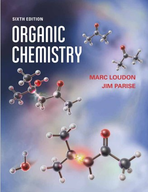(a) Use the picture of the catalyst complex in Fig. 11.3a to explain why most E allylic
Chapter 11, Problem 11.43(choose chapter or problem)
(a) Use the picture of the catalyst complex in Fig. 11.3a to explain why most E allylic alcohols undergo asymmetric epoxidation more rapidly than their Z isomers. C C CH2OH R H H C C R CH2OH H H an E allylic alcohol a Z allylic alcohol (b) Would the same phenomenon be observed with (2)-DET, the enantiomer of the DET used in Fig. 11.3? Explain.
Unfortunately, we don't have that question answered yet. But you can get it answered in just 5 hours by Logging in or Becoming a subscriber.
Becoming a subscriber
Or look for another answer
